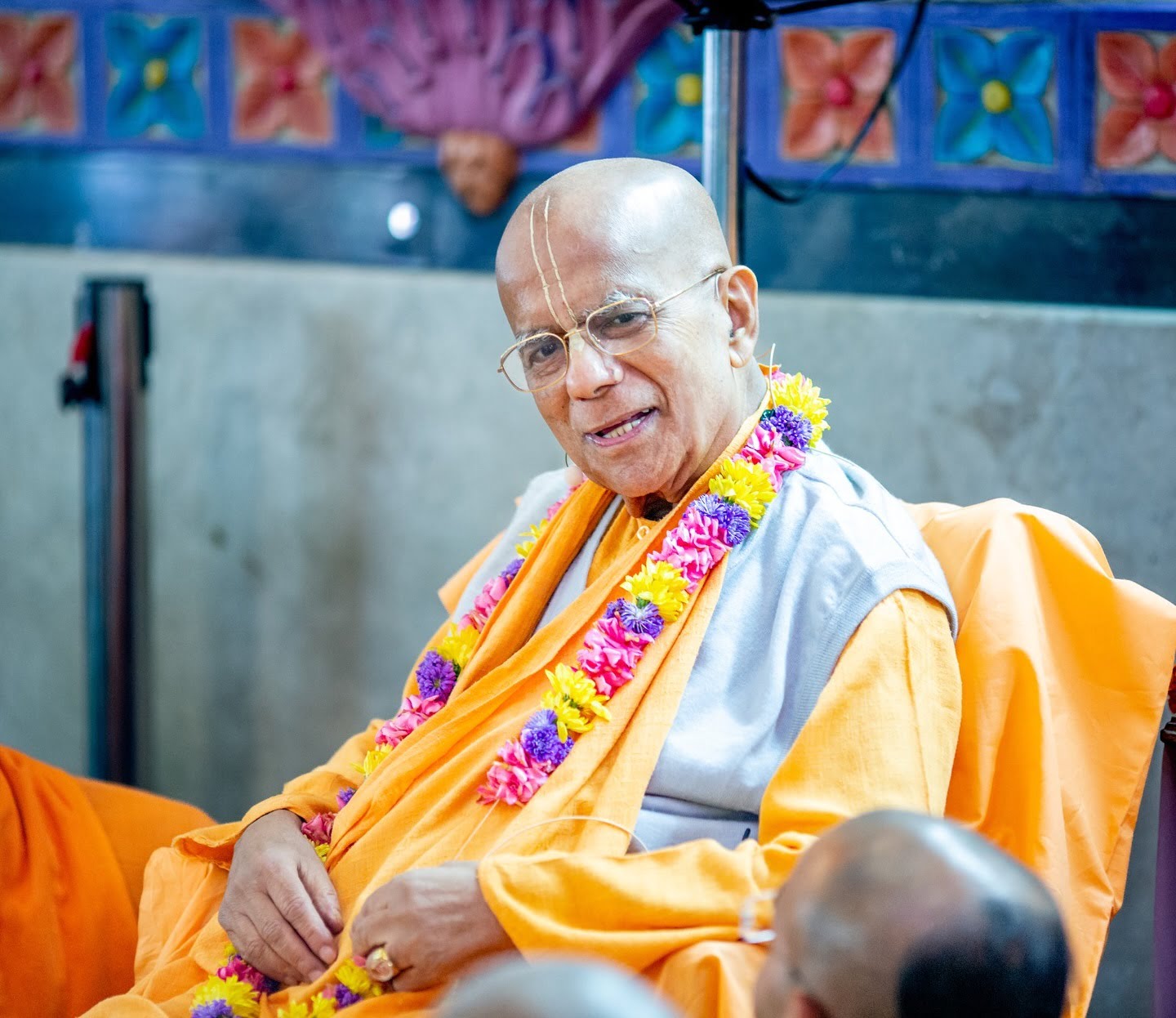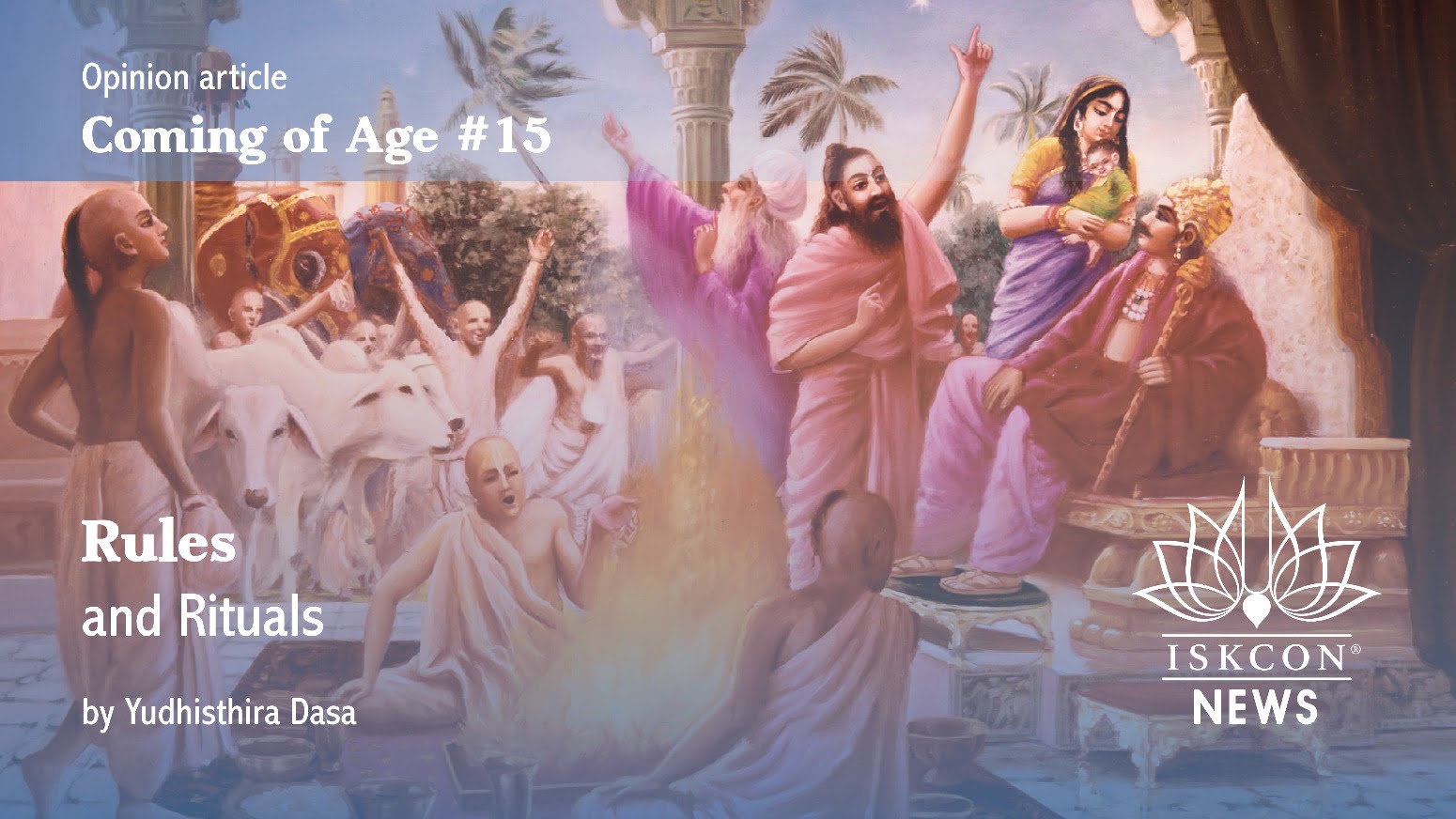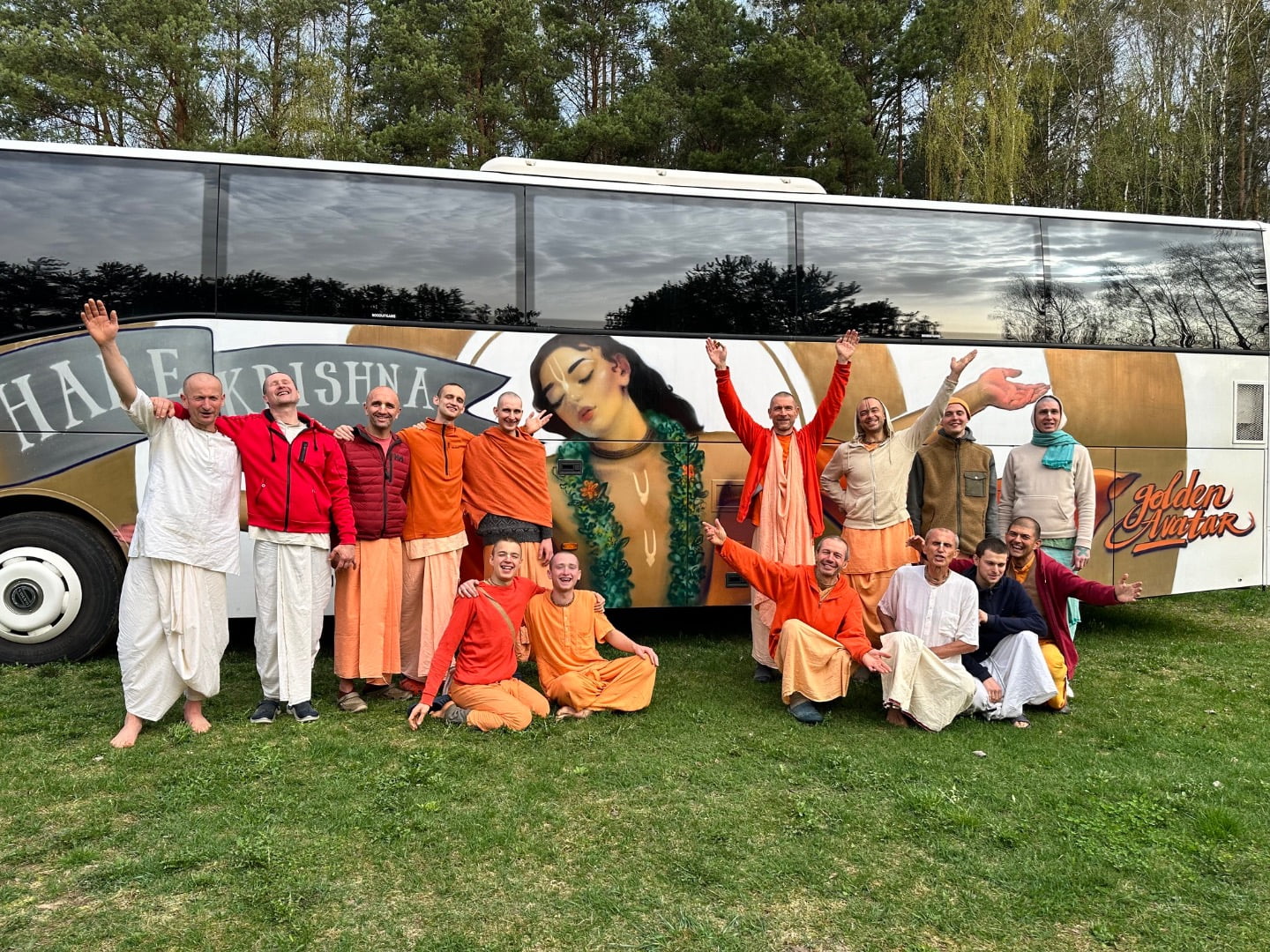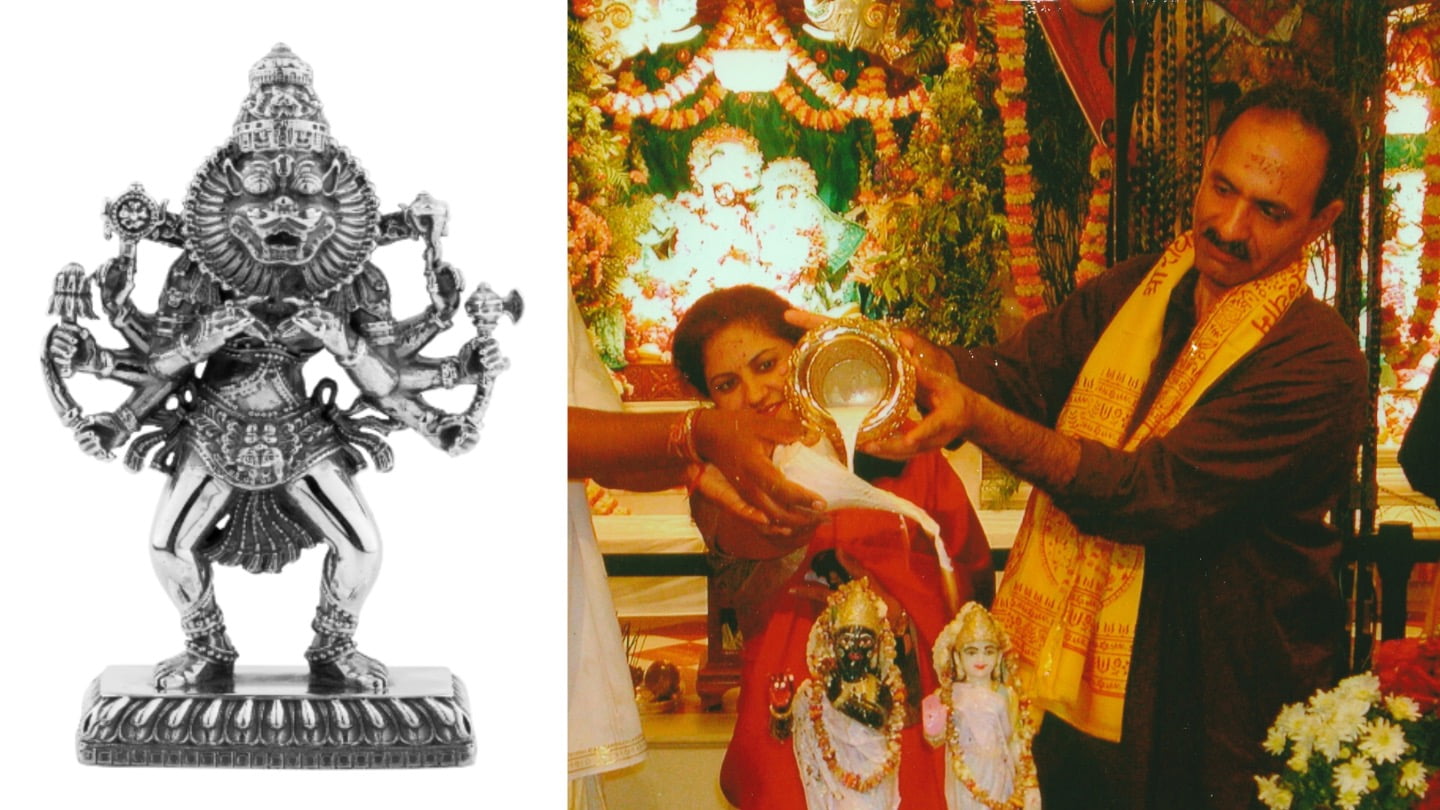Is Money Really Sweeter Than Honey?
By Bhakti Raghava Swami | Sep 10, 2010

“Money is sweeter than honey” is a common expression which has a special significance for most people living in today’s modern era of industrialization. The global politics of governance and diplomacy now place more emphasis on artificial factory-based economic growth than on the traditional natural agriculture-based growth of a country, thus forcing people to live in such a way that they will not be able to subsist without receiving a paycheck at the end of the month. That is the propaganda being promoted—and to a large extent, that is today’s “reality of life.”
The recent article entitled “Need to Migrate Workers from Agriculture to Services for High Growth: RBI,” which appeared in the Press Trust of India in Mumbai on June 18, 2010 gives credence to this on-going policy in no unclear terms. This trend is a global one which has been in practice now for many decades. That such an article appeared in a public forum simply shows how governments see economic development through industrialization as the norm for one and all.
For most people in today’s modern world, if one does not receive a paycheck at the end of the month, one cannot survive. Those who cannot join the labour force due to illness, lack of job opportunities, or sometimes due to sheer laziness, will approach government established agencies in order to receive social assistance benefits commonly referred to in the West as “welfare assistance.” With rising unemployment in different countries, more and more people are either receiving a monthly “welfare check” or a monthly “unemployment check.” Others, who may be disabled due to either natural calamities or due to the tragedies brought about by the modern way we live, may receive a monthly “disability pension check.”
In some of the more “developed” countries people who reach 60 or 65 years of age qualify to receive an “old age pension check” at the end of every month until they expire. All of this is extremely taxing on governments who can only meet such expenditures by levelling increased taxes upon the few healthy folk who can work.
All of the above has come about due to severe deviations from the standard Vedic norms of life. The Vedic view of life is that one should strive for self-realization and be satisfied with whatever Krishna arranges while working a reasonable number of hours a day, the general norm being not more than eight.
The goal of life was not based on economic development as we find in modern day society, but on self-development or self-realization. In the Vedic culture, the medium of exchange was not based on an artificial and fraudulent paper money currency but was based rather on real wealth, gold coins and similar minerals. Actual wealth was measured in how much grains one had in stock, in how many cows one protected and in how much land one cultivated. Before marriage, the criteria for accepting a bridegroom was how many cows and how much land he owned.
Chanakya Pandita, one of the well known moralists of his times, stated that real happiness was not having to leave home to make a living and not being in debt. Srila Prabhupada made a similar statement when he said that intelligence means not leaving the village and going to the cities to engage in hard labour.
Canakya Pandita also explained that three things should never be neglected: fire, disease and debts. According to the Vedic scripture Srimad-Bhagavatam, “One should own as much as he immediately needs.” For this reason, Srila Prabhupada’s guru Srila Bhaktisiddanta Sarasvati Thakura would instruct his temple leaders to spend all they had received the same day and thus avoid keeping money which could be a source of anxiety.
Dharma, Artha, Kama, and Moksha
The four pillars in the Vedic culture are found in 1) dharma (religion), 2) artha (money), 3) kama (satisfaction of the senses) and 4) mokhsha (liberation). Vaisnavas generally reject these four activities, thinking them to be binding to this material world. However, these four activities can either be a source of bondage or a source of liberation, depending on the consciousness in which they are performed.
Religion (dharma) practiced for selfish material motivation, money (artha) gained through non-traditional occupations and for merely material pursuits, satisfaction of the senses (kama) performed merely for unrestricted self-centered sense enjoyment and liberation (moksa) pursued for merging into brahman, will certainly bind one more and more to this material world.
However, these same activities of dharma, artha, kama and moksa, when performed in proper knowledge and understanding of the real goal of life, can help one make steady progress in spiritual life. The varnasrama system—a traditional vedic social structure of natural vocations and life stages—gives the proper understanding and guidelines as to how these four activities are meant to be performed in life, with a view to satisfying God.
Dharma should be performed in the context of devotional service (param dharma) which will result in “yayatma suprasidati,” where all things will be satisfied. Artha should be in keeping with the standard traditional occupations given within an agrarian based society, where the emphasis on self-sufficiency and the bartering system resulted in most people not having to deal the local currency. Kama should be performed in a regulated way for the purpose of keeping body and soul together with the goal and higher purpose of rendering devotional service to the Lord. Moksha will then be automatically attained by one who performs the three above activities in such higher consciousness.
Modern Paper Currency is Flawed
Within the system of varnasrama, three-fourths of the population do not earn money, namely the brahmacaris, those in the vanaprastha and those in the sannyasa asrama. Grhasthas, in particular the ksatriya householders and the vaisya householders, assisted by the sudra householders, are meant to support the rest of society. The brahmanas and sudra class do not earn money, only the ksatriya class through taxation and the vaisya class, but only one portion of the vaisya class, those engaged in trade, vanijyam. Those engaged in both krishi, agriculture and go-raksya, cow protection, also do not deal with money but rather with goods.
The real currency should be in minerals such as gold or silver, and the real wealth should be in having tangible goods such as land, cows, grains, etc. The artificial paper currency currently in use is both artificial and fraudulent since it does not represent real wealth. Most countries in the world are in severe debt (which is increasing every year), including the USA, with only temporary and flawed adjustments being made to salvage the present global economic crisis.
It was only a few decades ago that in most countries of the world, the majority of people were living in rural areas and most people did not even need money. The land is meant to provide for all our necessities of life. This is evident in the histories of even a Western country like Canada. In the early part of the 20th century, when most Canadians lived in the country, almost all their necessities were met from the land, including clothing and shelter.
The Emerging Politics of Food Scarcity
“The last century has seen ballooning populations develop impossible economies – all based on a dream of perpetually cheap energy, and based on ignorance of the laws of finiteness in regards to all the natural elements that make our life possible,” said Lester R. Brown of the Earth Policy Institute. [http://www.earth-policy.org/]
“The cheap energy bubble is bursting, soil and water are in overdraft, and the result is acute vulnerabilities for nations who’ve exceed their resource base,” he continued. “Industrialized countries amongst these are passing those vulnerabilities along – to nations that still have true wealth (soil, water) but who do not have social infrastructures sufficient to properly protect them. Many poor [countries] are having their natural capital sold out from under them.”
Spiritual Economics
The Vedic model of local and global economy is based on simplicity, psychology, logic, and God conscious principles. Dhanesvara Das is well versed in the basic concepts of varnasrama dharma and has deeply studied the essential teachings of the Bhagavad-gita in the context of economy. He has compiled a Krishna conscious thesis in the form of a book entitled “Spiritual Economics”. This section from his introduction can help us gain more insight on the topic of money:
“Spiritual Economics as a cross-disciplinary study combining psychology, economics and the spiritual science of the Bhagavad-gita explains why there is vulture capitalism, cut-throat competition, unending economic hardship, exploitation, inequity, and struggle in this world,” he writes. “Spiritual Economics explains the origin and solution of our ecological problems.
“Spiritual Economics explains why the present economic methods can do nothing to solve these problems, reveals the actual source of our economic problems, and explains the only factual solution that can create an economy that serves everyone. Spiritual Economics explains the actual source of our economic problems and how to solve them, once and for all.”
A Memo From the Past
What Have we Learned in 2,064 Years?
The following short message written during the time of the Roman Empire by Cicero (55 BC) gives us a little insight regarding the topic at hand:
“The budget should be balanced, the Treasury should be refilled, public debt should be reduced, the arrogance of officialdom should be tempered and controlled, and the assistance to foreign lands should be curtailed lest Rome become bankrupt. People must again learn to work, instead of living on public assistance.”
So what have we learned? The answer is: “Nothing.”
Conclusion
As widely advised by our Vaishnava predecessors, we should utilize whatever money that comes our way in the service of the Lord. The Vedic norm is that 50% of one’s income is meant to be used for helping spread Krishna consciousness. Money, when thus used in the Lord’s service, becomes a means of liberation for the living entity. But money used for sense gratification, either self-centered or extended, becomes a source of bondage to this material world.
The varnasrama system is so designed as to help us minimize and ultimately do away with the need for paper money by stressing a lifestyle of simple living and high thinking, in keeping with the principles of self-sufficiency and sustainability, depending on the mercy of the Lord.
“Money is so dear that one conceives of money as being sweeter than honey. Therefore, who can give up the desire to accumulate money, especially in household life? Thieves, professional servants [soldiers] and merchants try to acquire money even by risking their very dear lives.” –Srila Prabhupada, Srimad-Bhagavatam 7.6.10
or further details, please contact Bhakti Raghava Swami at bhakti.raghava.swami@pamho.net or vrindavanlila.brs@gmail.com














